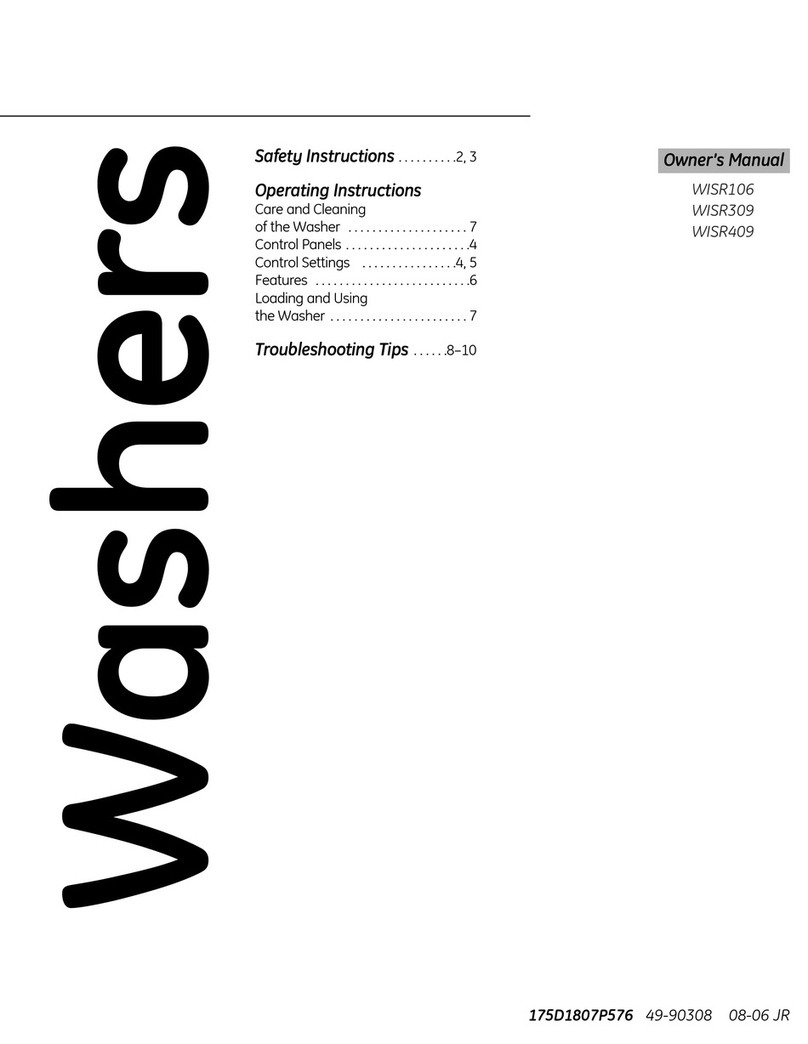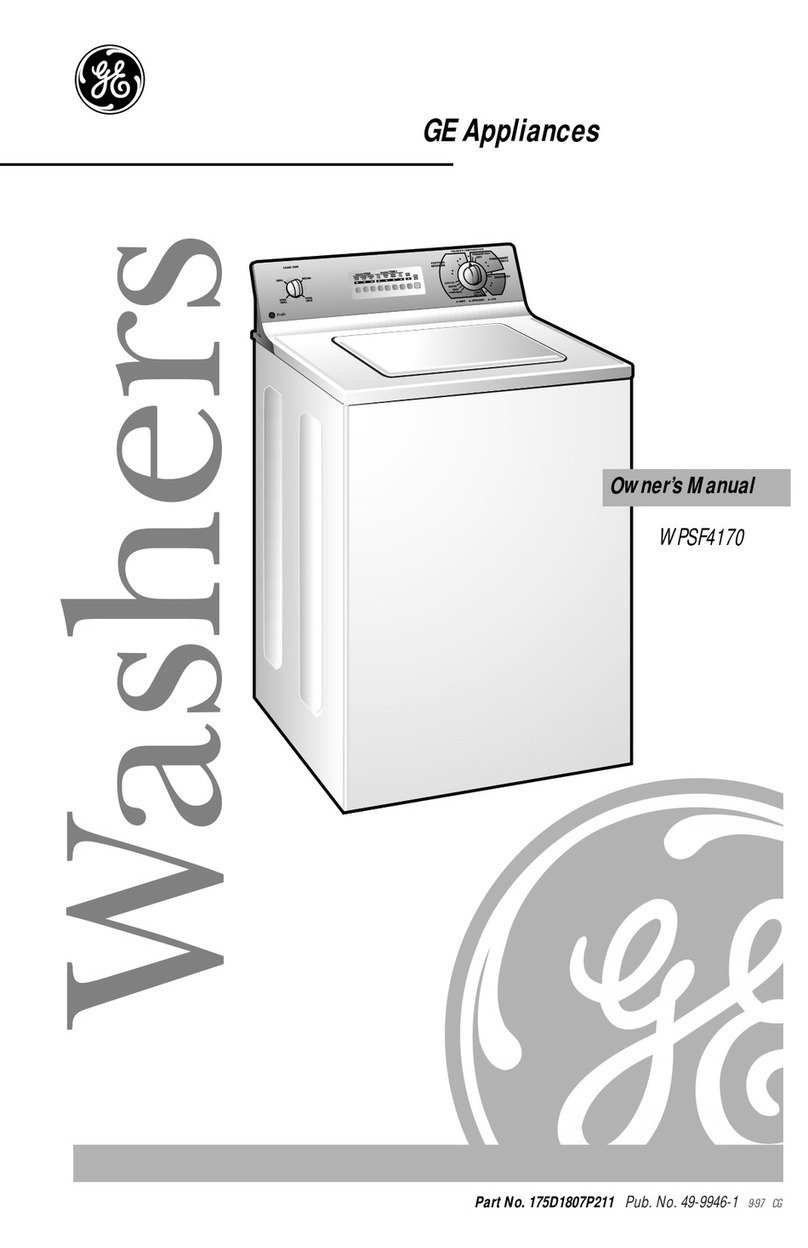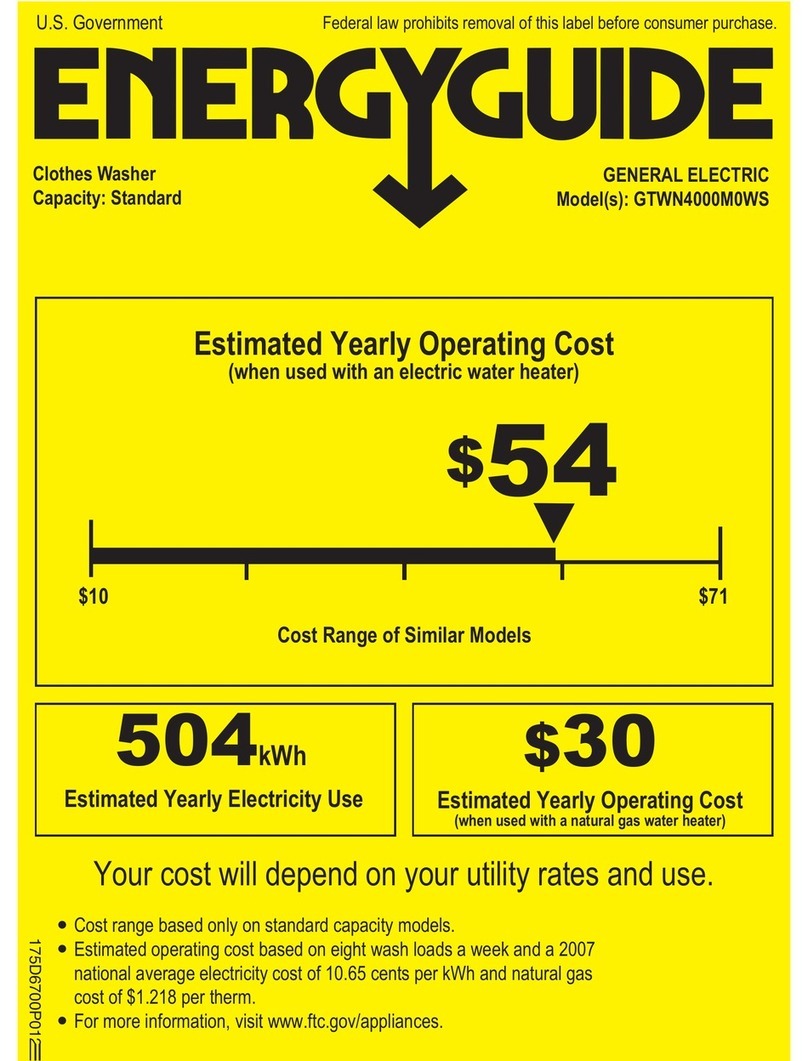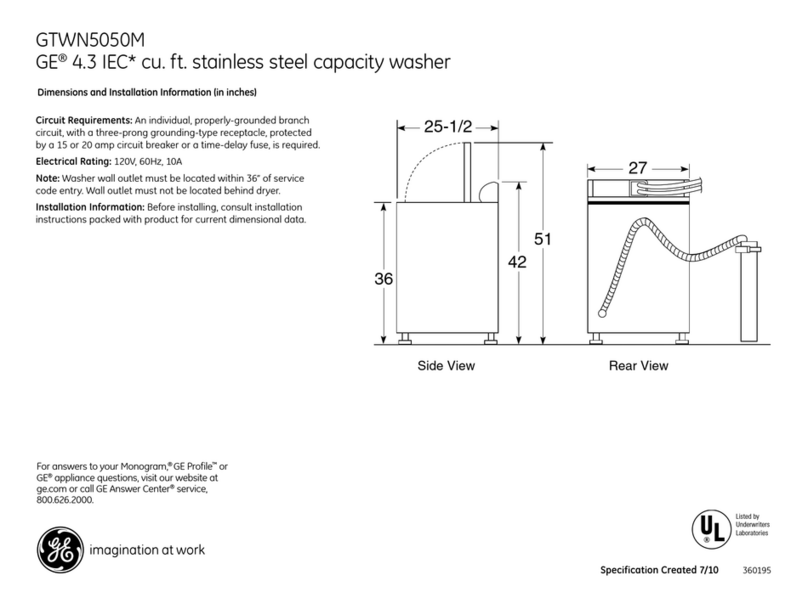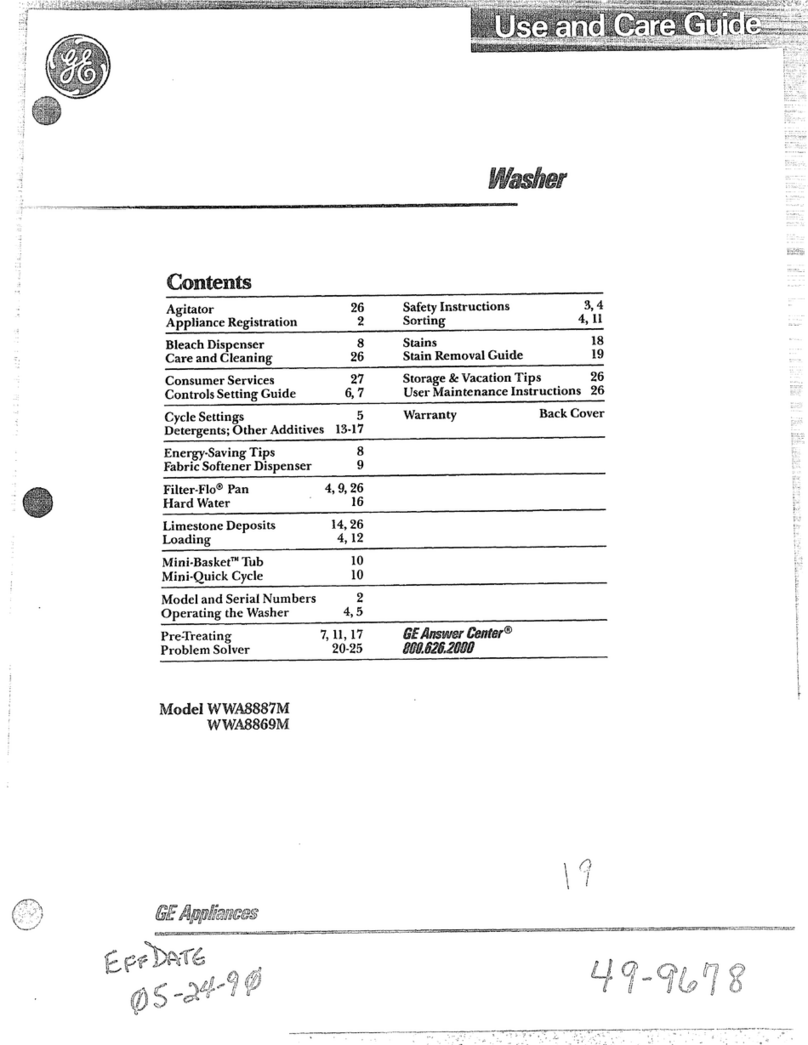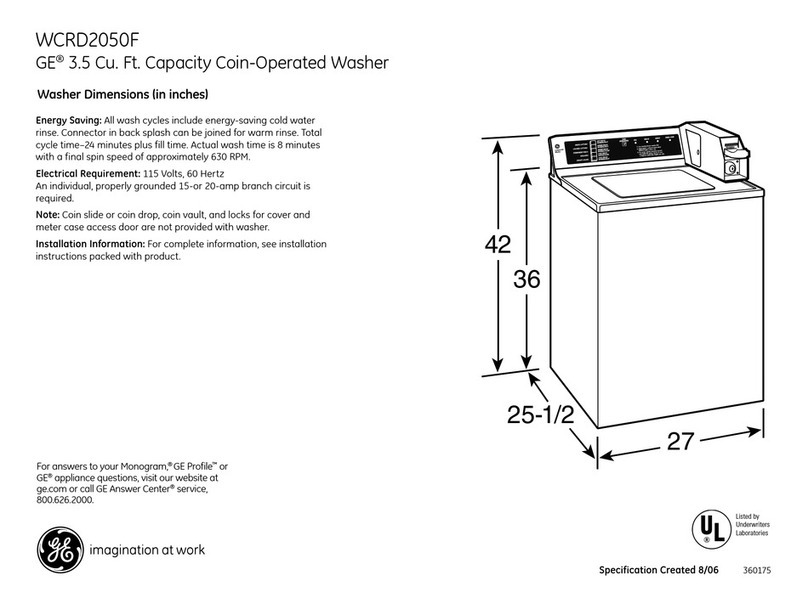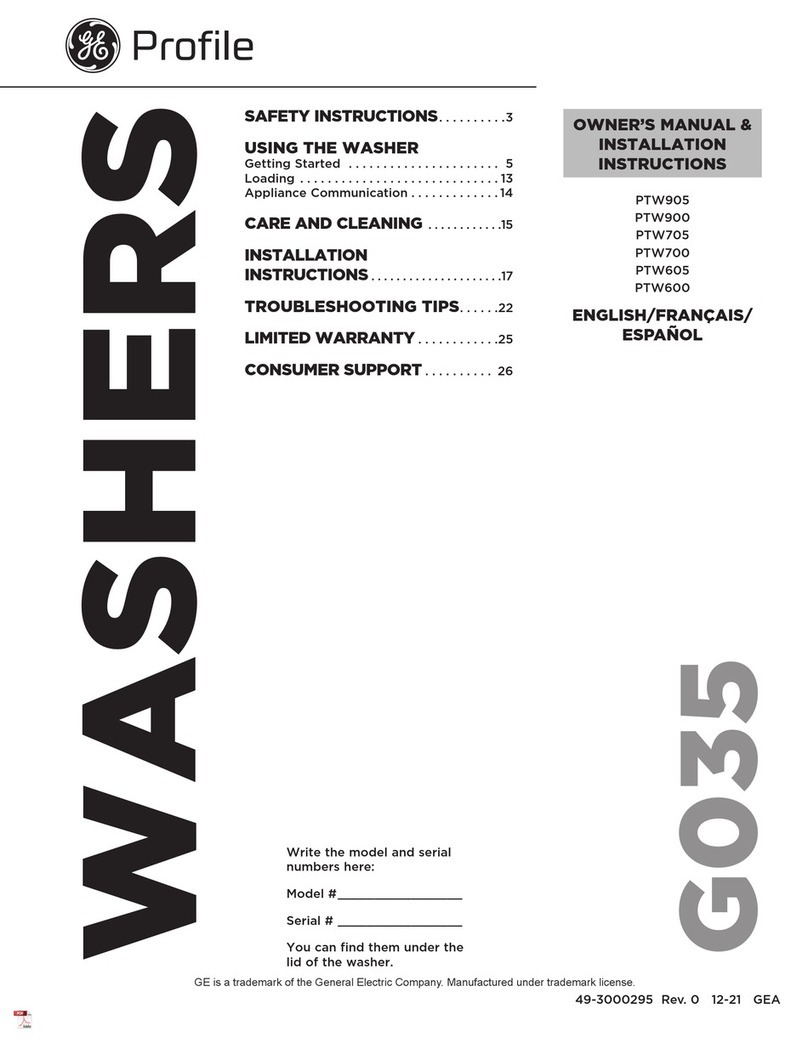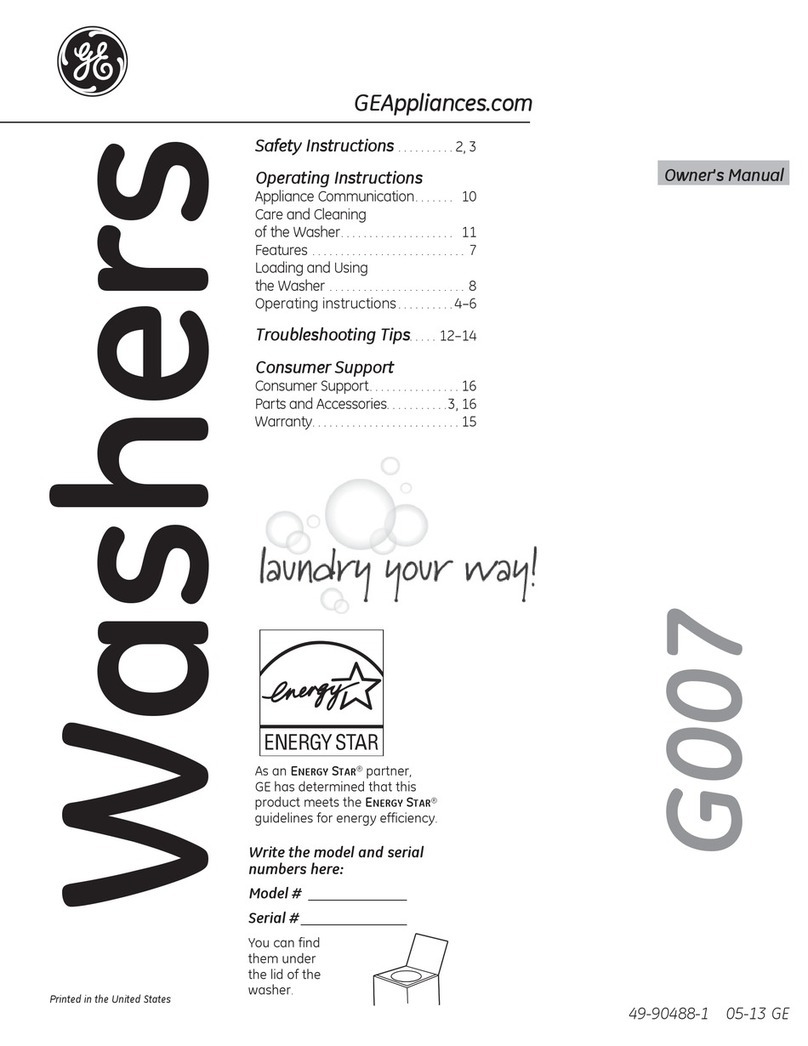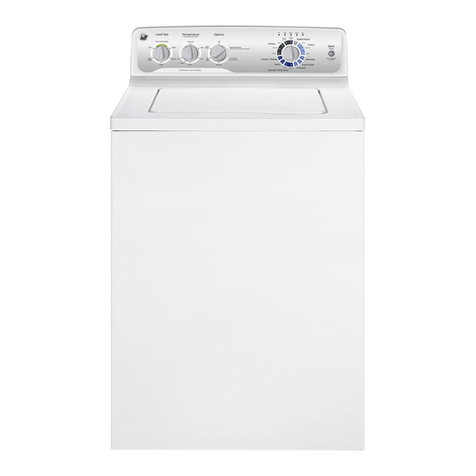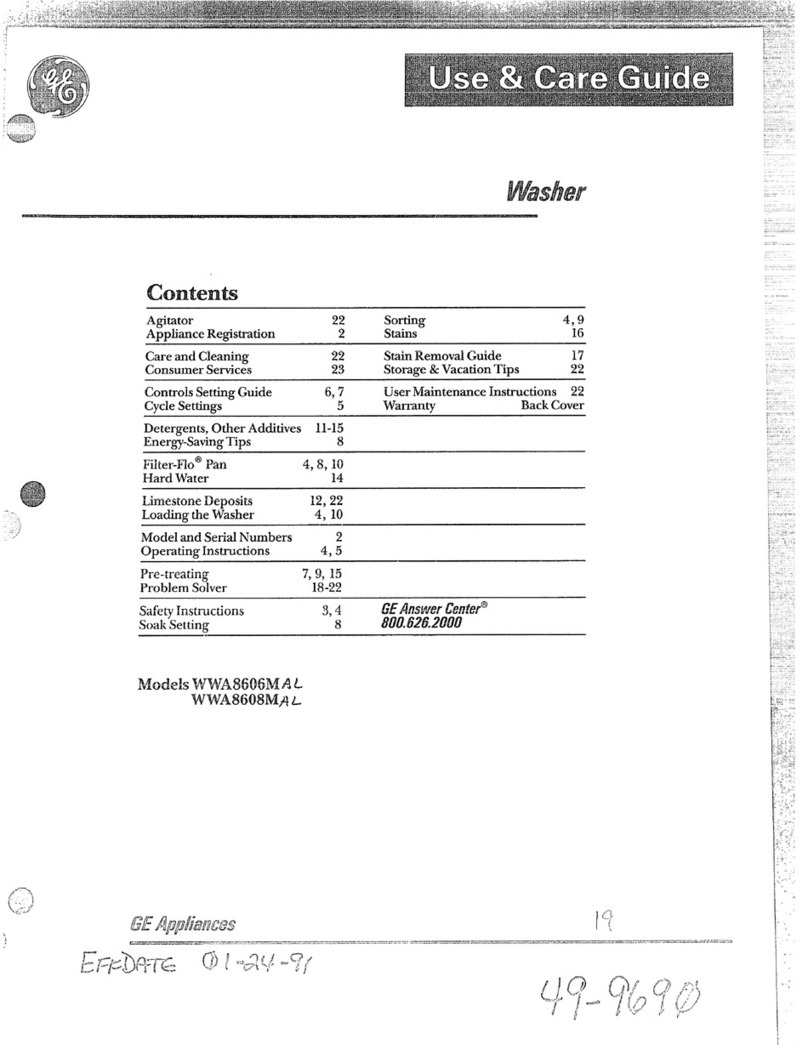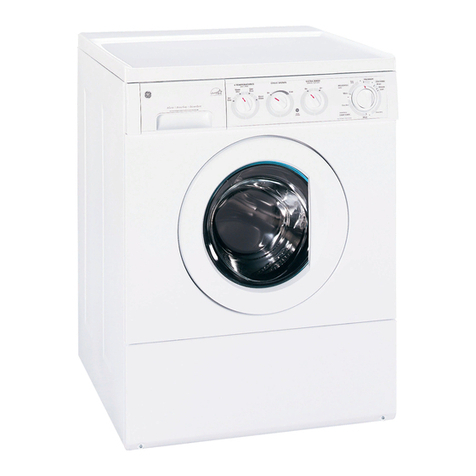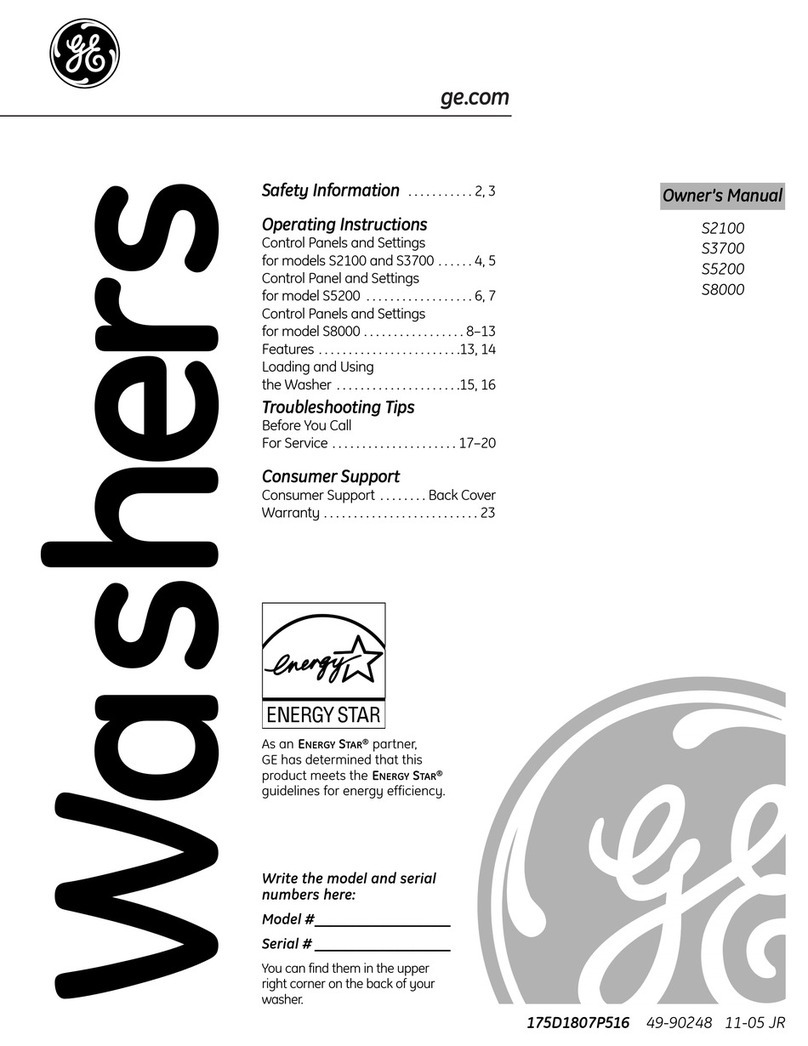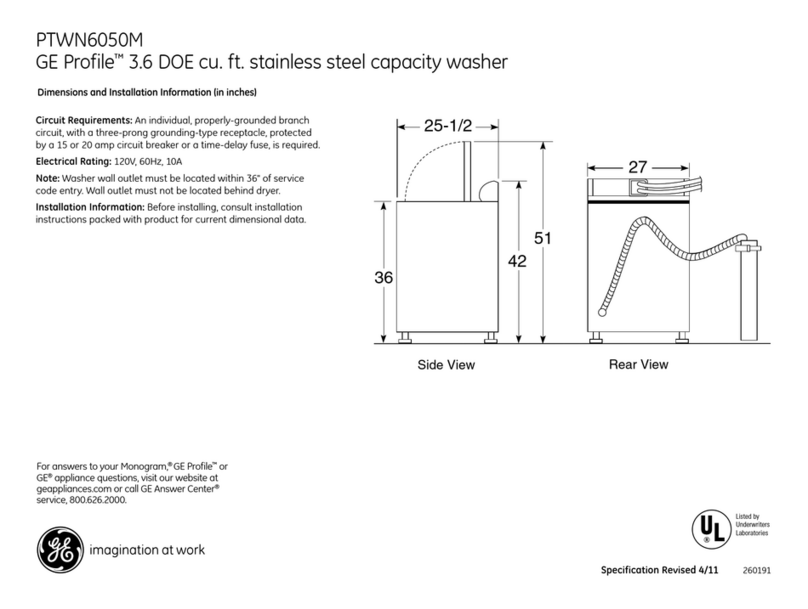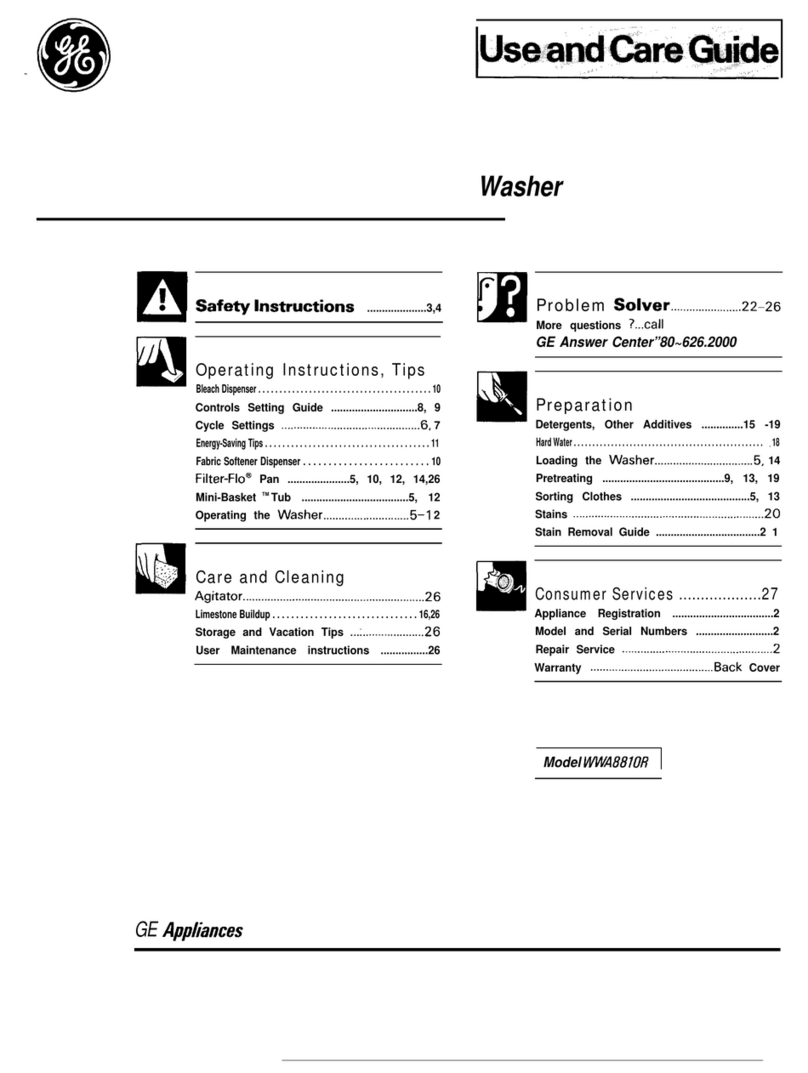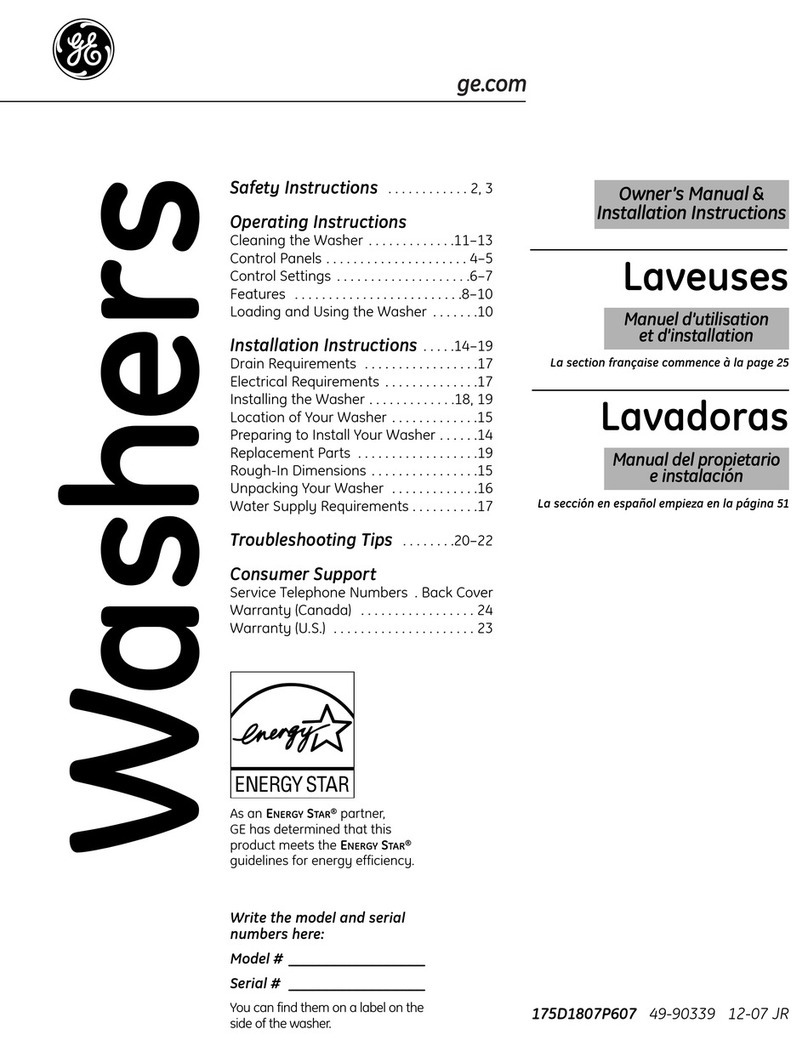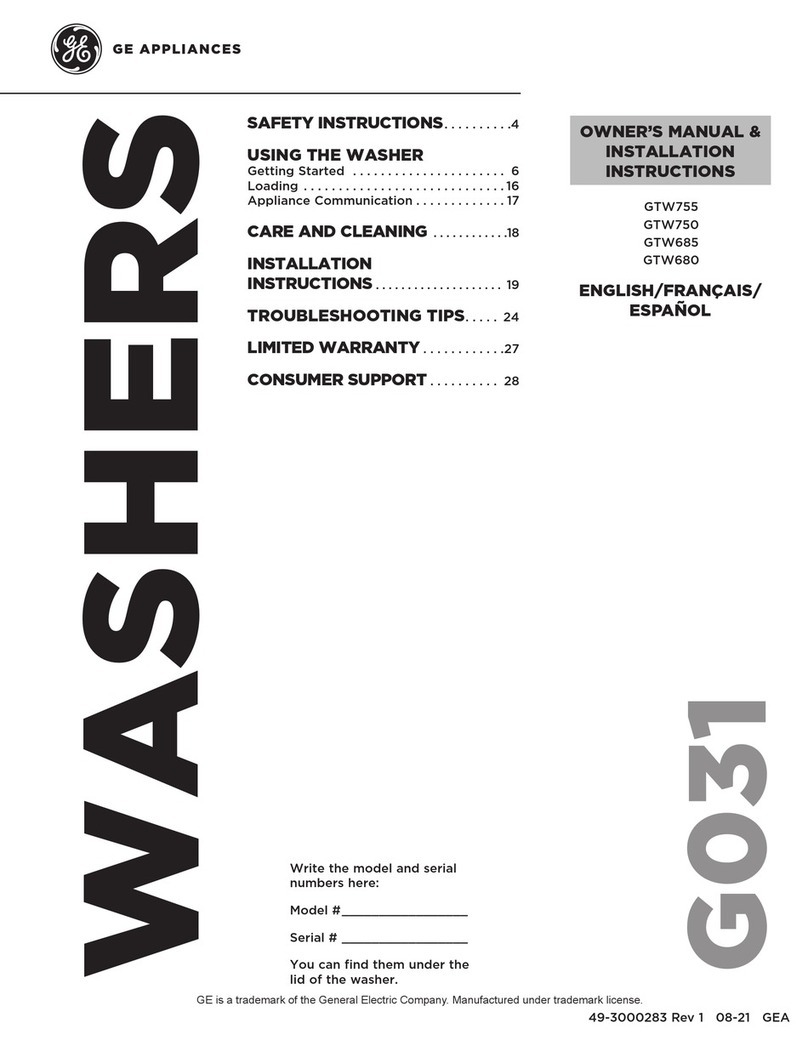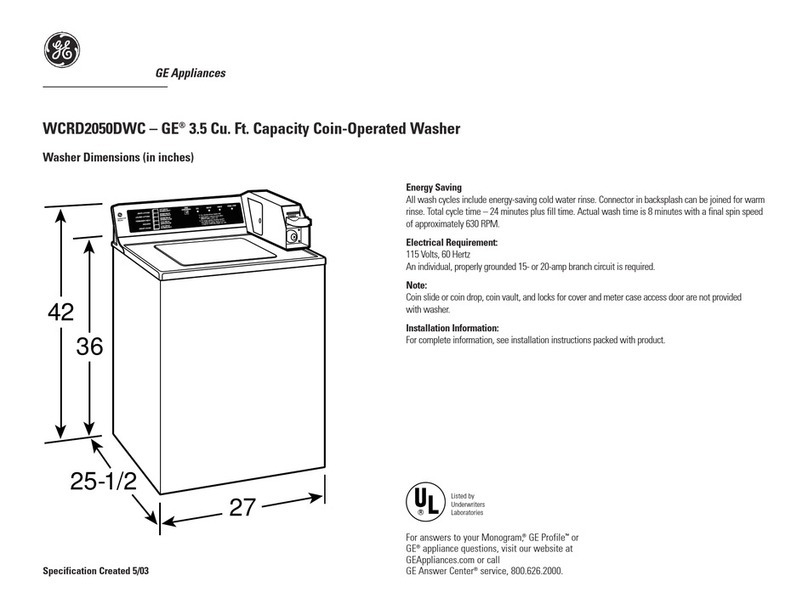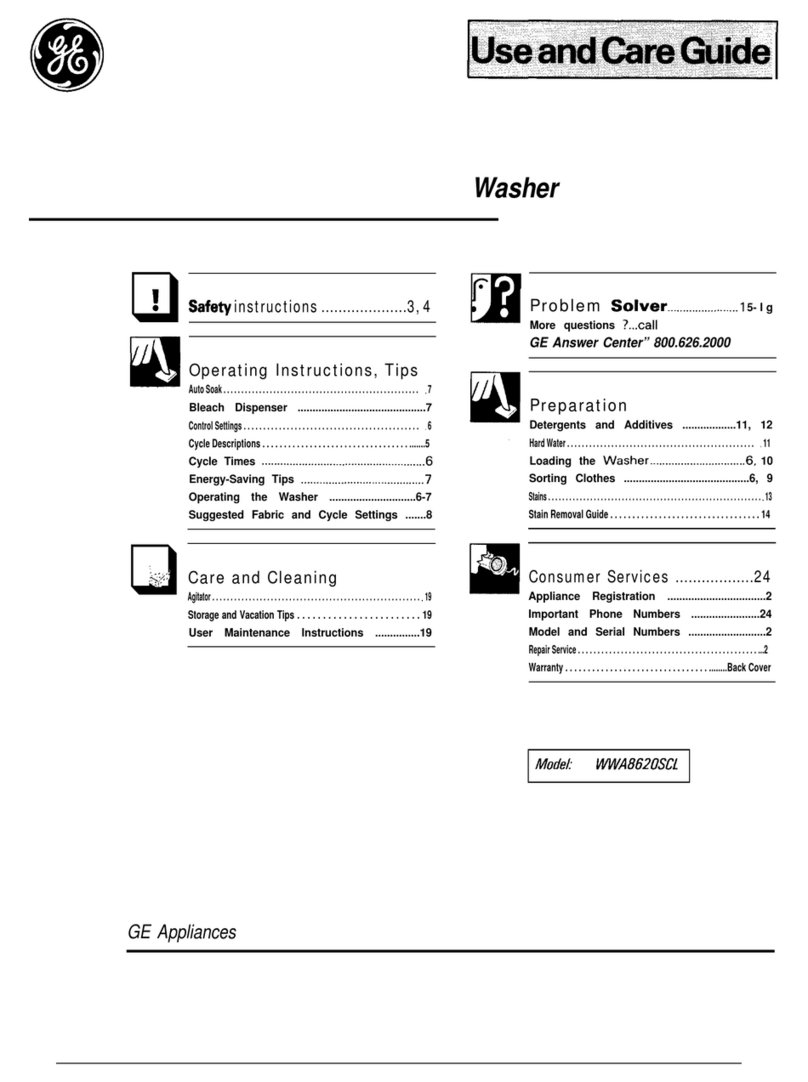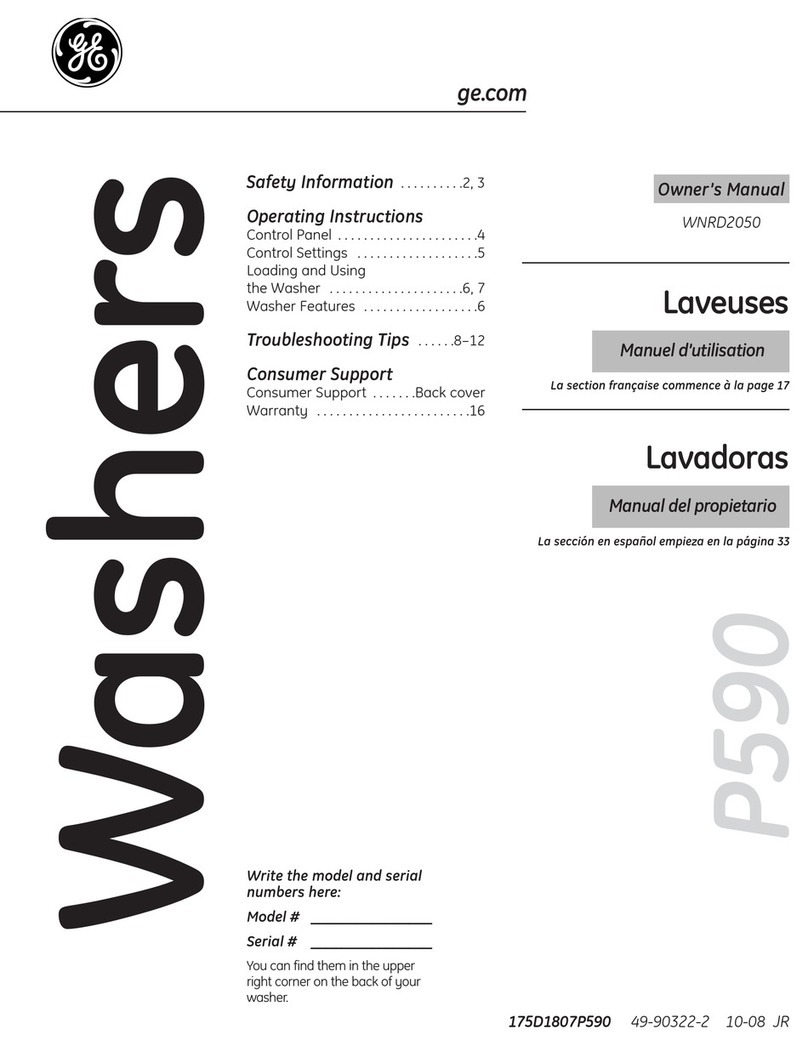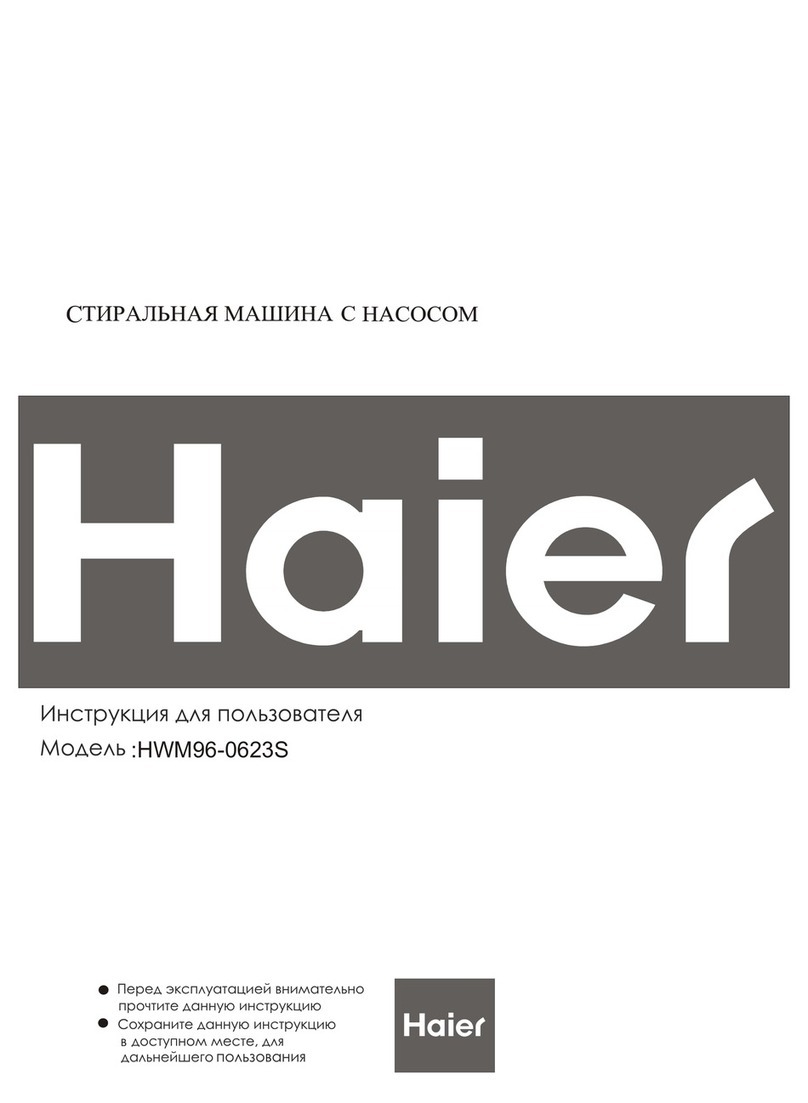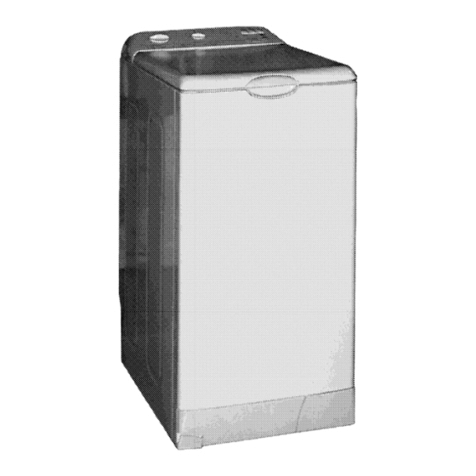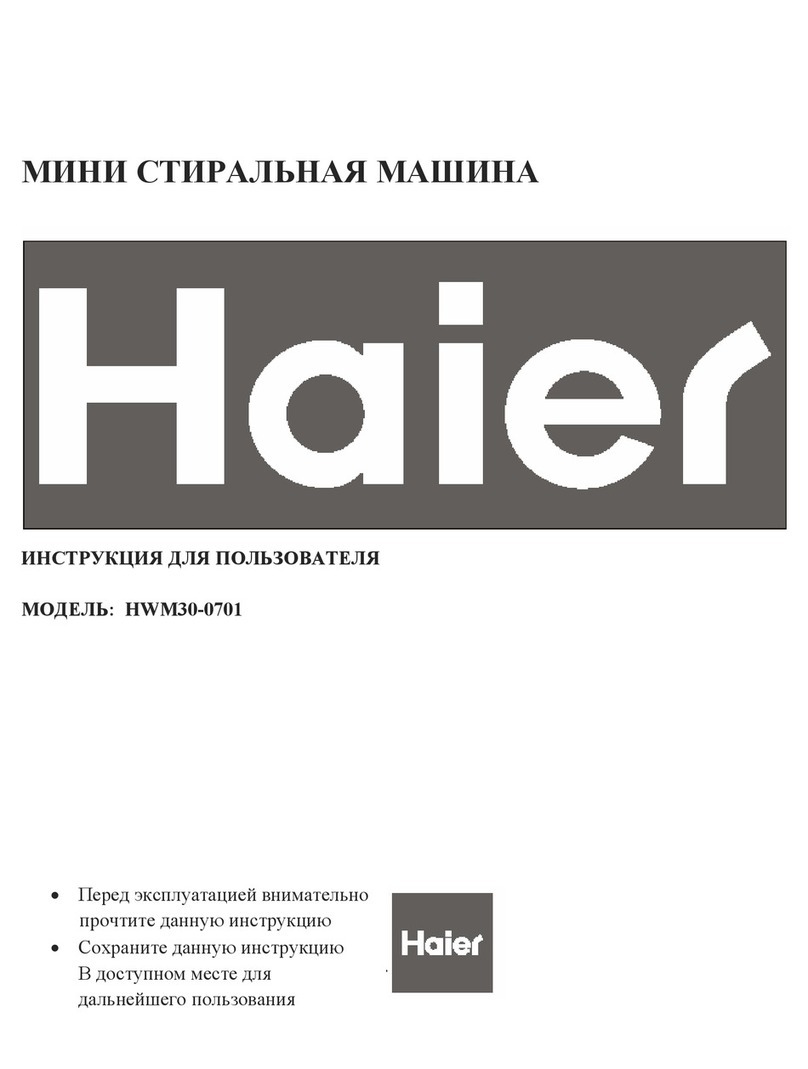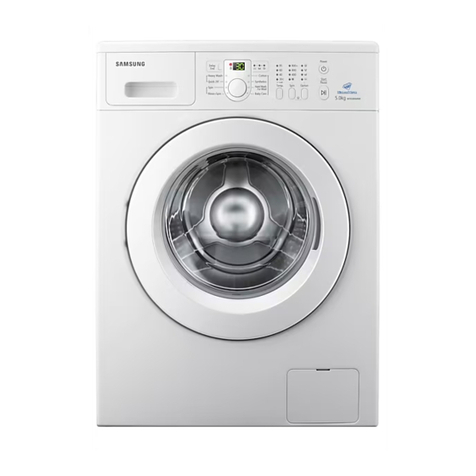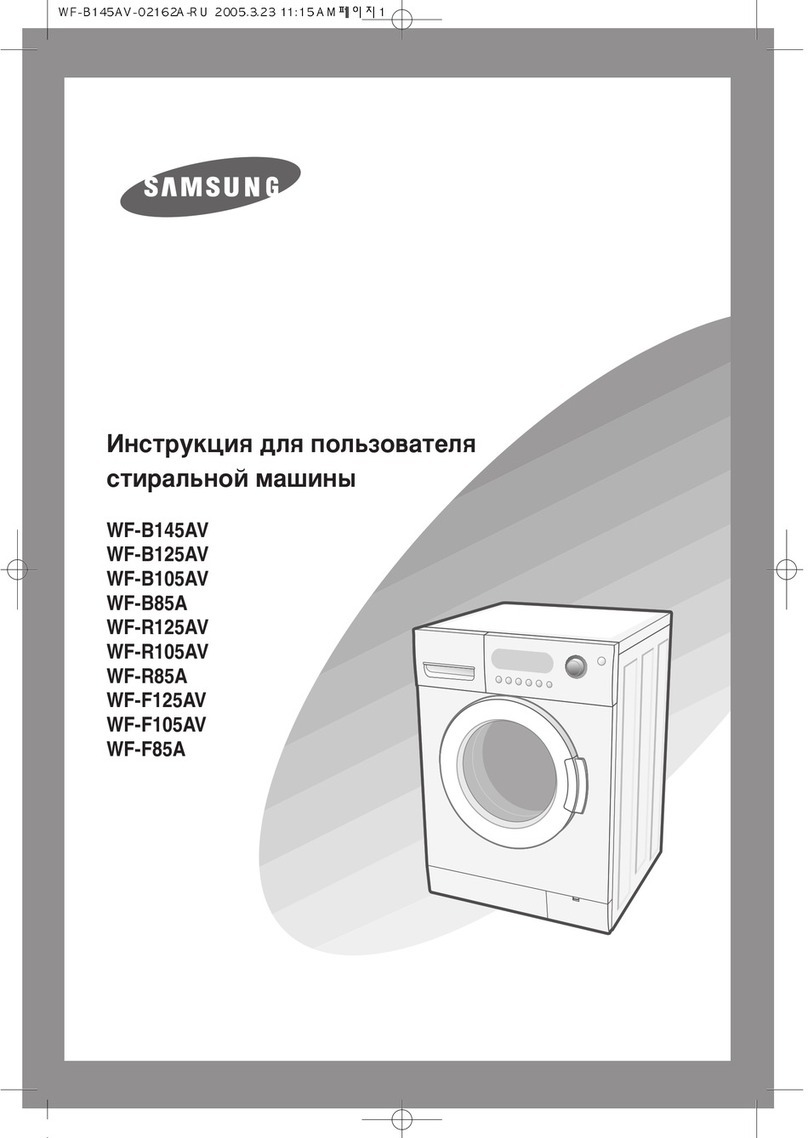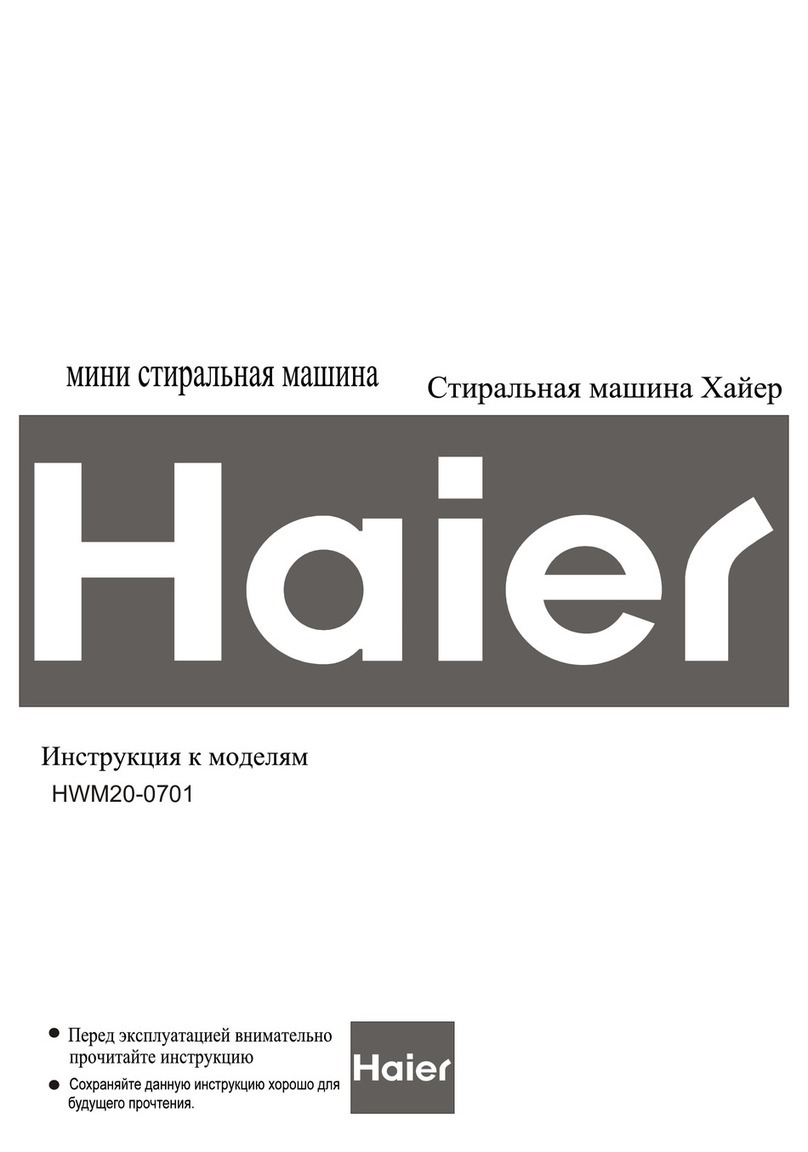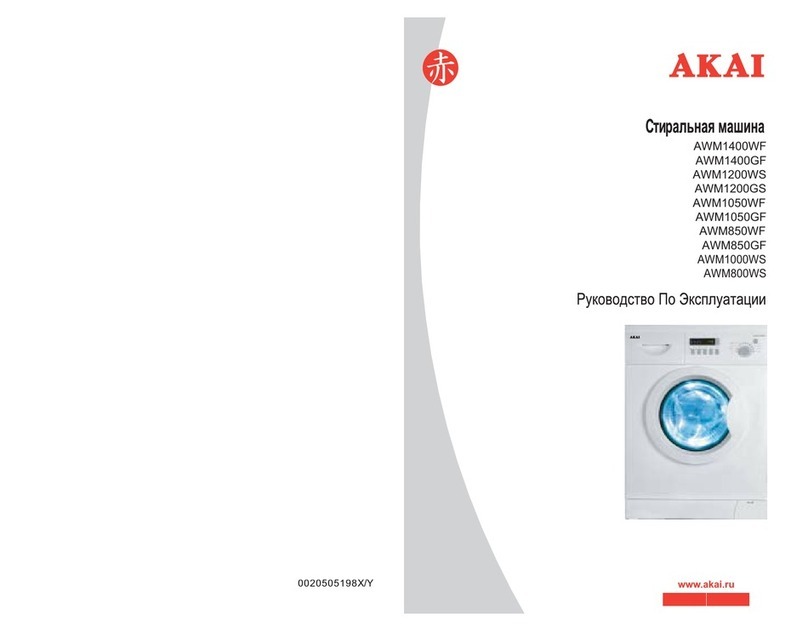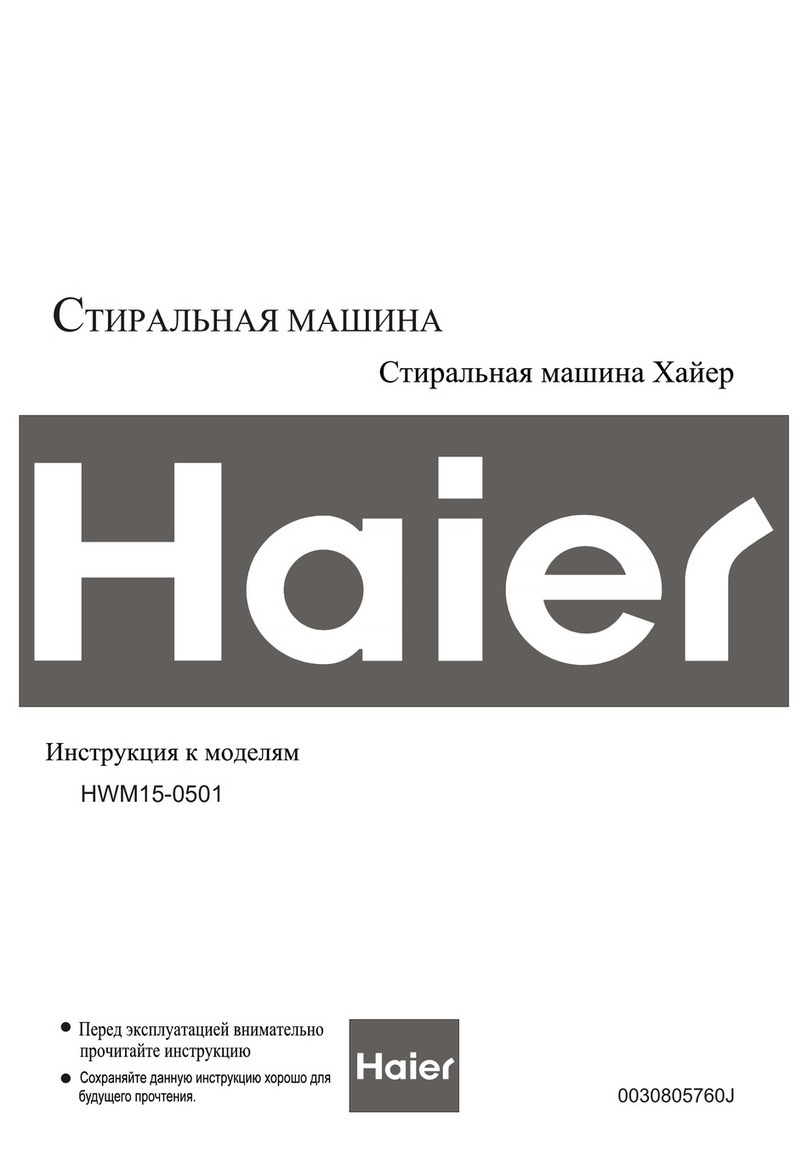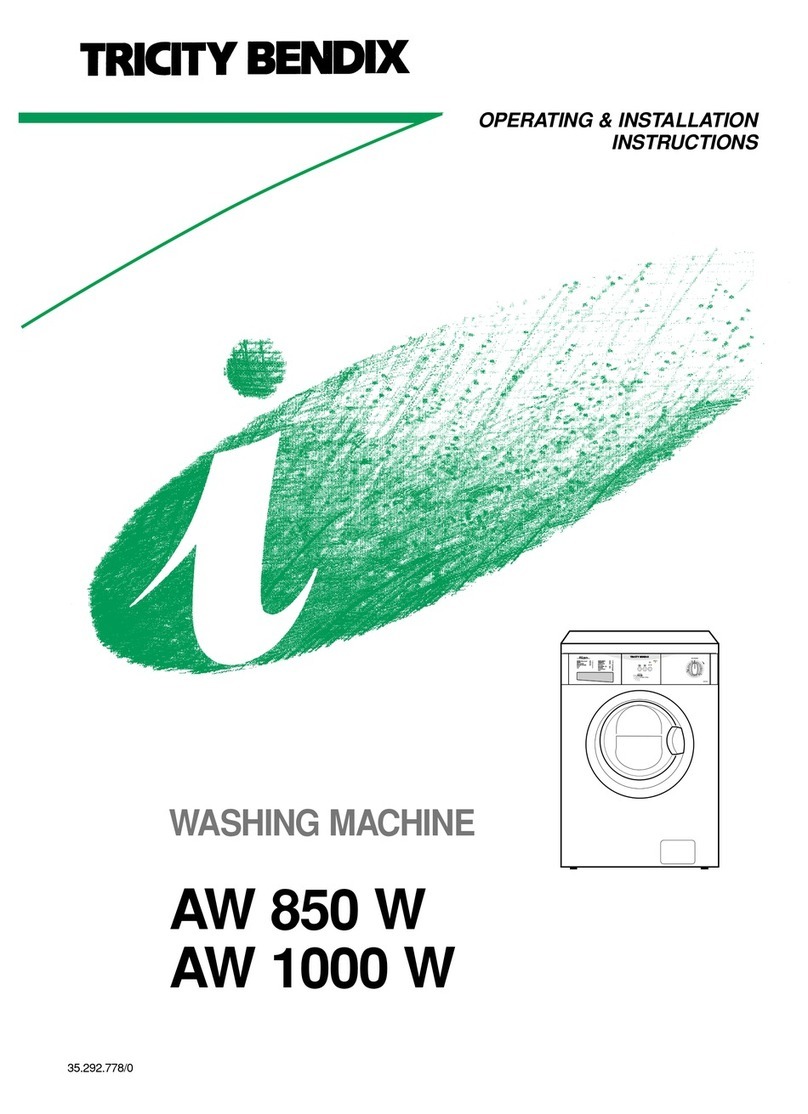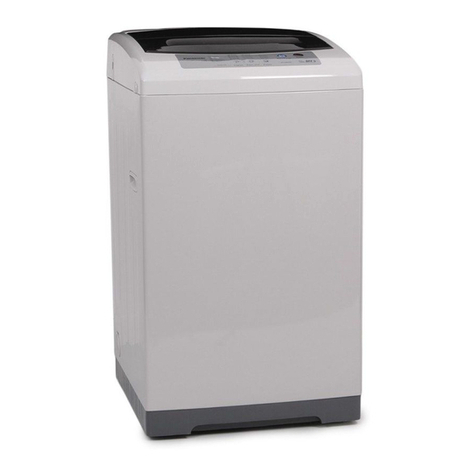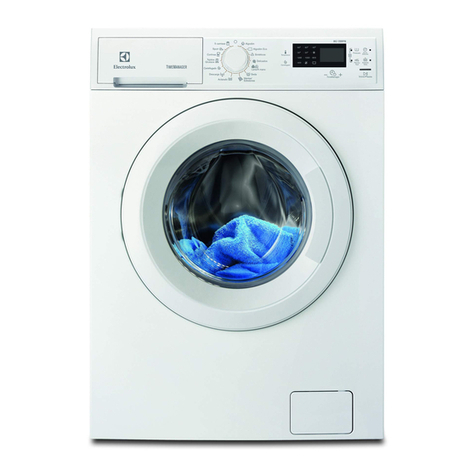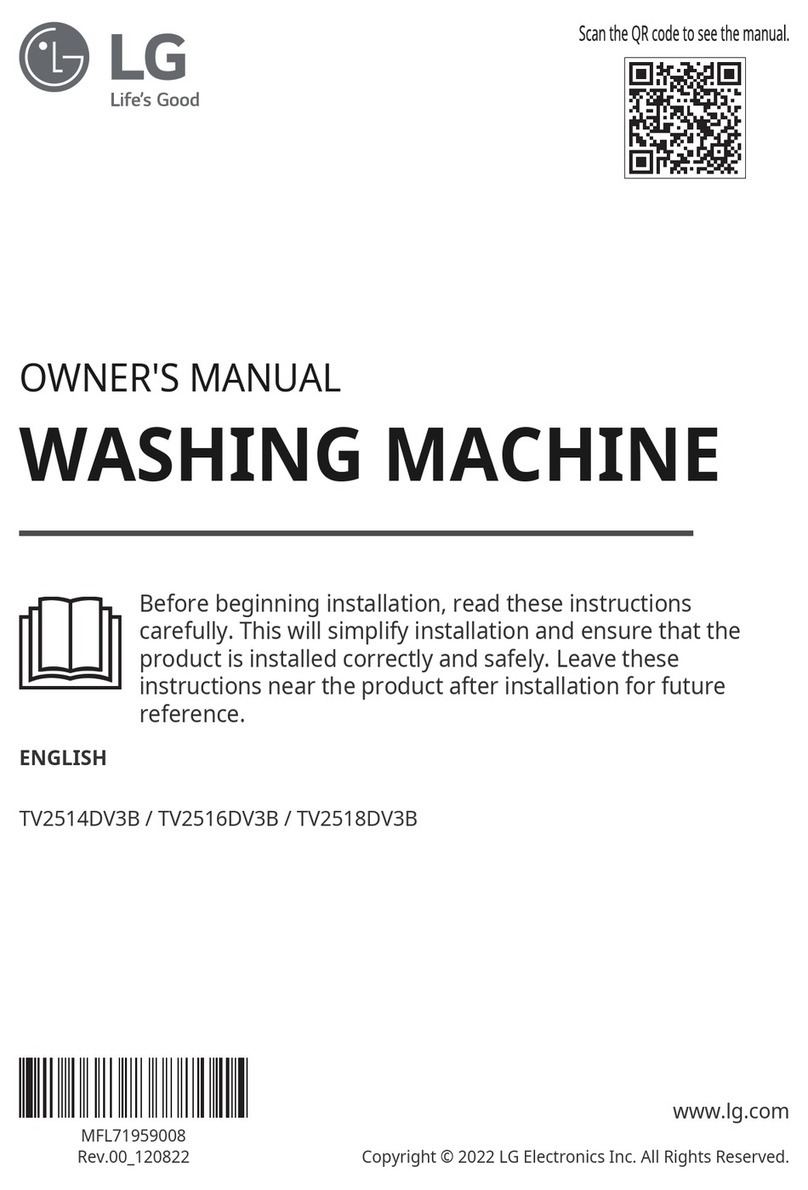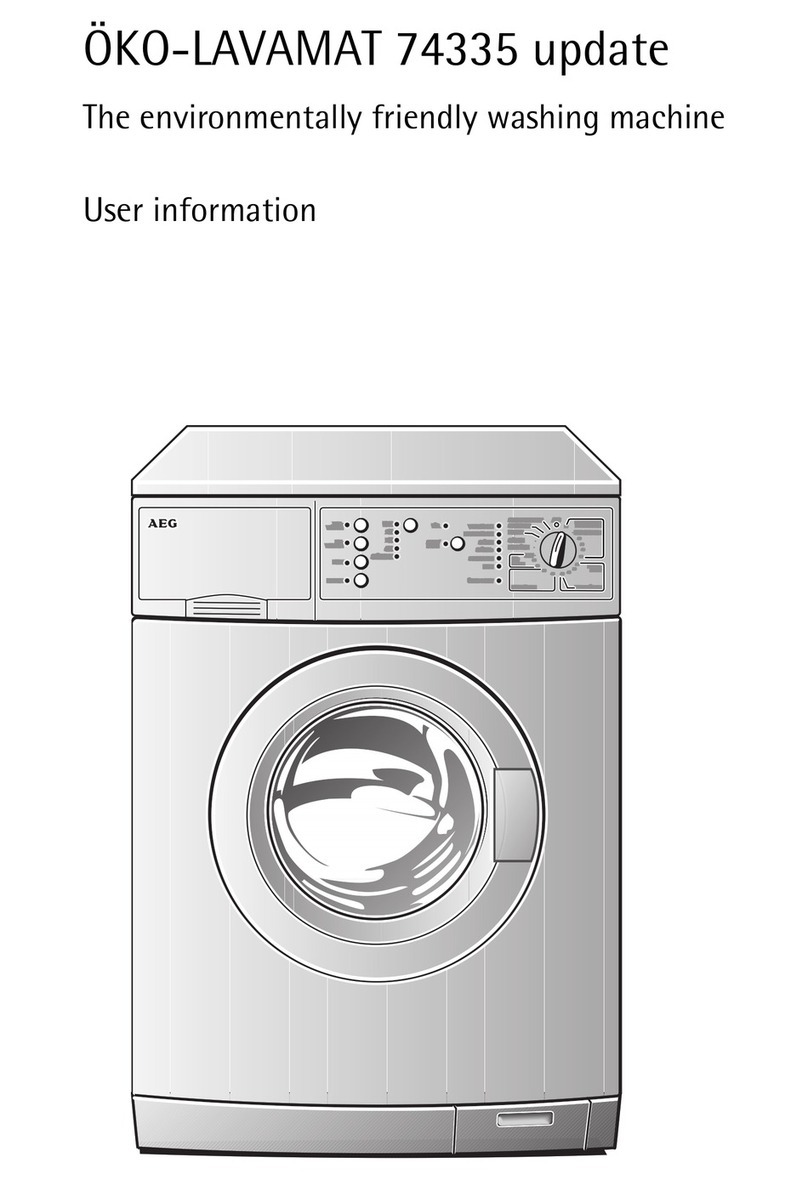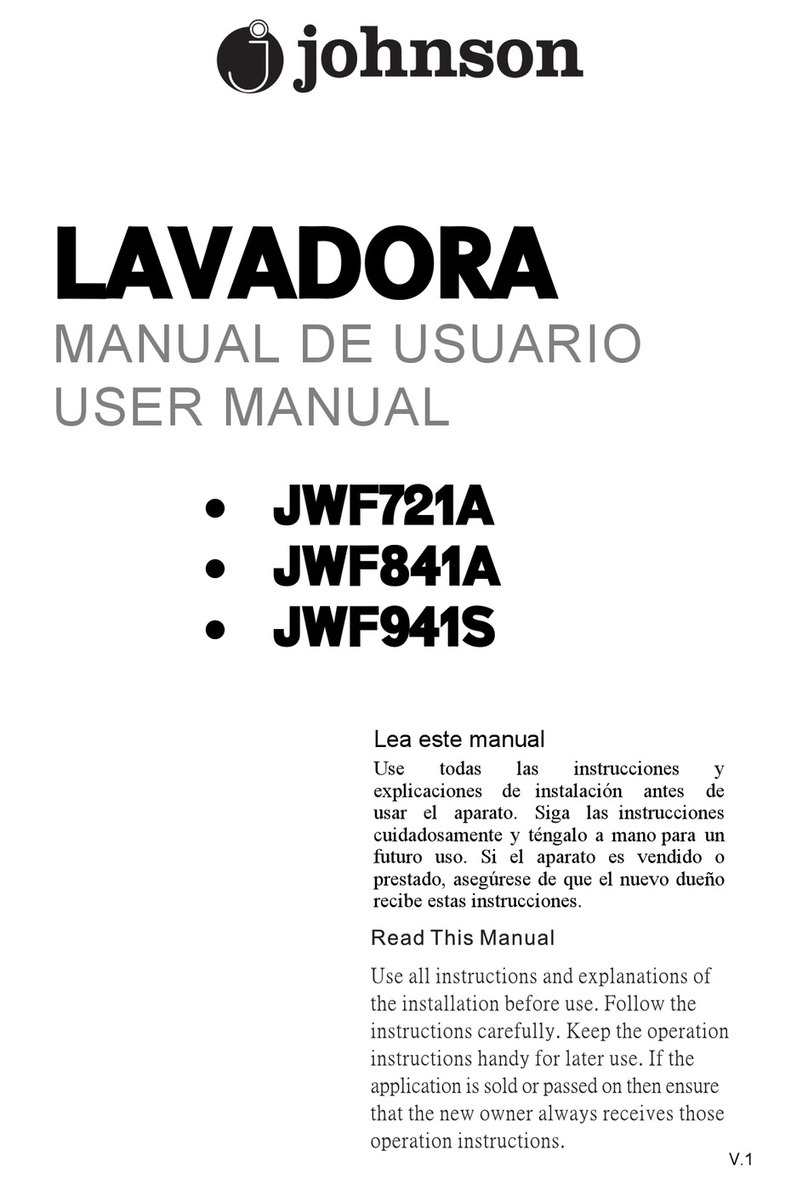AUTOMATIC WASHER
COMMERCIAL APPLICATION
GENERAL ELECTRIC WASHERS
GENERAL PRINCIPLES OF GOOD PRACTICE
(COIN-OPERATED MODELS ONLY)
In fldfilling the specific ,leeds of different commercial installations tile purchaser of this
General Electric attmmafic washer may wish to locate tile coin box and controls in any of
a number of locations. Tile responsibility for tile proper performance of this work lies
solely with the purchasen It should be done by properly trained and qualified personnel,
and in accordance with local code requirements.
In addition, General Electric Company assumes no responsibility or liability whatsoever to
the purchaser for any patent infiingement expenses, either in tile tbrm of damages or legal
costs, where the alleged inflingement is based on a parent claim including one or more
components added by the purchaser (i.e. ,lot supplied by General Electric Company with
the purchased washer).
Set forth below are some general principles which should be followed by persons installing
the coin box and controls in tile desired location. This listing is ,lot all-inclusive, and is
only intended to serve as a general guide. These principles are intended m supplement,
not modiff', the Installation Instructions which accompany the attmmatic washen
I. Any component added to the atttomatic washer, either electrically or mechanically,
should be properly grounded.
9. All current-cartTing metal parts should be isolamd flom possible contact by the user.
3. All wiring should be properly promcmd from sharp edges, burrs, moving parts and other
agencies which might cause abrasion of tile insu]afion on the conductors.
4. All electrical connections should be mechanically secure, and should provide adequate
and reliable electrical contact under conditions, such as vibration, to which they may be
subjected.
5. All electrical components, wires, and terminals should be of proper electrical rating for
the specific application.
6. All insulating materials should remain effective under the specific conditions to which
they will be exposed (e.g., humidity, temperature, etc.).
7. The installation should ,lot be incompatible with tile electrical circuit within the
atttomafic washer; ,lot in any manner, inmrfere with either tile safety' devices or the
sequence of operations of the cycle which are engineered into the appliance.
8. Uninsulamd cnrrent-carwing metal parts should haw adequate and ensured permanence
of spacing flom other parts.
